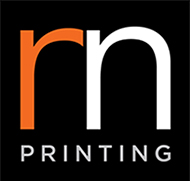Do you understand what a brand really is and how important it is to a company’s success? Don’t worry, if you don’t because so many others are in the same boat.
The fact that you’re reading this article means you want to get out of that boat and stand out. The question is how do you want to stand out? Do you want your customers to see your business as the “bigger, better” ship? Or an exciting plane with the daredevil tricks? Or some futuristic form of transportation no one has ever seen before?
Take note that none of these are necessarily better than the other. You get what we mean with this analogy, don’t you?
That’s what branding is in a nutshell: how you want your consumers to perceive you. Just as you can’t be in a boat, in a plane and in a spaceship at the same time, you can’t be all things to everyone. Some won’t want to see you as a boat, some would. Your business might be a better match for plane-lovers and not for the sci-fi fanatics. You decide.
Before you start drafting ideas, how do you know if you’ve come up with iconic and memorable visuals for your brand?
1.) Know who you are as a company.
While a big part of branding is being appealing to customers, it also involves having a strong grasp of the business’ character. Your brand represents the values and the identity that brings your company together. It will help reach out to your target market and let them know why you exist and what you want to achieve.
2.) Know who your consumers are.
Are they laid-back travelers with a severe case of wanderlust or formal company achievers and businessmen? Would they choose wood over metal? Do they like American burgers or Italian spaghetti? The last question might be a bit too far or unrelated to your enterprise, unless it’s in the foodservice industry. The point is you should know your target market well enough so you know where to meet them, how to talk them, how to dress in a way that they’d want to let you in their circle.
3.) Construct your brand identity.
A common technique is imagining the brand as a person. List down the qualities or write a description of this individual based on who you are and how you want to connect to your customers.
4.) Create the logo.
Before you begin creating, it’d be great help to find inspiration. Come up with pictures that match your brand identity. Find designs with a similar look and feel you envision for your business’ graphics and compile them. You can put them on your wall or go virtual like using Pinterest and other online mood board applications.
The logo is vital because, not only is it a summary of the visual brand identity, but is usually receives the most exposure. A person should find it easy to recall your brand when they see your logo, regardless of whether your company name is there or not and vice versa.
When you see partially-eaten apple, you think of the tech giant. A castle with the outline of half a circle is Disney. Do you see the mental power a logo holds?
5.) Pick the colours.
Shades on their own create a mood and placing them side-by-side to create a palette gets different results. Yellow has either an anxious vibe or a cheerful one while red is typically associated with great intensity. The rule of thumb is it should contain 1-3 primary colours
6.) Choose the fonts.
When picking fonts, base it on the shape of the logo and limit it to 2-3 different font families. Assign one to be your primary and another to be the secondary. Avoid following trends because they eventually become outdated or common. You’d want fonts that match the entire look and feel you’re going for, and would last.
7.) Decide on your iconography and design system.
The rest of your graphics should have a unified theme that reflects the brand concept. Google has mastered this hands-down. They’re branding is so consistent with the rest of their graphics that you could easily tell if an icon belonged to Google or not. It also includes any material with design from print to digital such as brochures and your website. It involves your choice of images, the arrangement of the headers and text, etc.
Over the years, brands either maintain their brand personality or completely change them, depending on the direction of the business. It goes back to the fact that your brand speaks of who you are and why your consumers should pay attention to you.



 1300 483 455
1300 483 455 0418 260 940
0418 260 940 132 Marsden St, Parramatta
132 Marsden St, Parramatta




